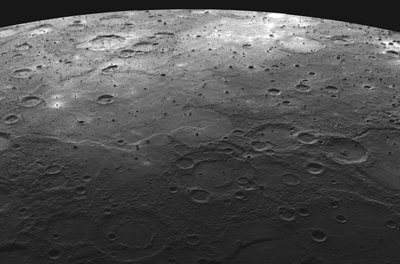 Mercury is the planet closest to the sun and is the smallest planet in the solar system. It is so small that some natural satellites exceed its size like Jupiter’s Ganymede and Saturn’s Titan. However, Mercury possesses more mass than both Ganymede and Titan. Despite its size, it is only second to Earth in density making it the 2nd densest planet in the solar system.
Mercury is the planet closest to the sun and is the smallest planet in the solar system. It is so small that some natural satellites exceed its size like Jupiter’s Ganymede and Saturn’s Titan. However, Mercury possesses more mass than both Ganymede and Titan. Despite its size, it is only second to Earth in density making it the 2nd densest planet in the solar system.
If Venus is comparable to the Earth in appearance, Mercury is comparable to the Earth’s moon. Both are heavily cratered and have plains reminiscent of Lunar maria. Due to the lack of “hands-on” studies made to Mercury, it is the most mysterious of the four terrestrial planets. A great mystery that surrounds Mercury is the absence of a natural satellite.
There has been no explanation regarding Mercury’s lack of a natural satellite. However, there are several theories and assumptions circulation that could answer this mystery:
- The proximity of Mercury to the Sun would make it hard to maintain a natural satellite. Earth’s moon was caused by a large impact between the planet and a large object with a mass comparable to Mars, which resulted to the appearance of the moon. Even if the same thing happened to Mercury, the Suns powerful gravitational force would pull it away from Mercury.
- Mercury will never have the opportunity to capture smaller and less massive celestial bodies. Several planets obtained satellites by capturing asteroids and smaller celestial bodies that strayed too close. Mars obtained its two moons, Phobos and Deimos in this manner because of the asteroid belt near the red planet. Mercury is too far away from the asteroid belt for this to occur.
- Pluto’s Nix and Hydra became natural satellites similar to how Mars obtained Phobos and Deimos. The only difference is that Nix and Hydra were most likely comets instead of asteroids. Since comets are icy celestial bodies traveling in space, it would melt because of its proximity to the sun.
